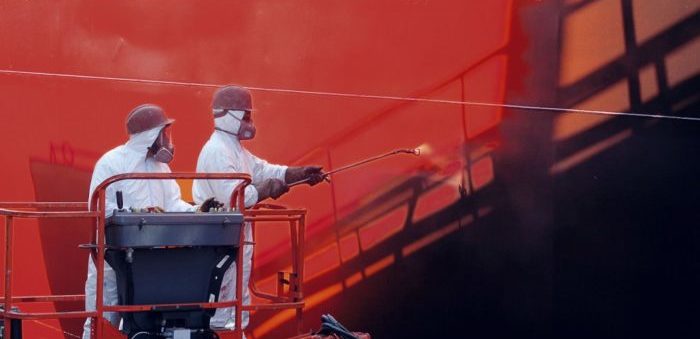UK P&I Club, in conjunction with marine coating consultants Safinah, is advising on the importance of hull and cargo tank coatings. The primary role of coatings is to protect assets from environmental corrosion, in order to provide as long a service life as possible. Not only does corrosion affect service life, it has a real and detrimental effect on costs to the asset owner in terms of service time, down time, performance levels and ultimately, asset value.
To preserve the life of a vessel or cargo tank coating, there are some key considerations that should be taken into account. Two common causes of coating failure are related to coating thickness. Both over and under application of the protective coating have the potential to cause problems. It is therefore important that the paint manufacturer’s guidelines are adhered to.
Over-application of the tank coating at new build can result in paint failure if insufficient time is allowed for the coating to cure properly before loading the first cargo. If over-application is known to have occurred, ship-owners should seek advice, and delay loading the first cargo until the coating has cured properly. Once the damage has been caused, if it is too extensive for patch repairs, the coating will need to be replaced.
Another problem that can occur is the development of cracking. This can happen due to the build-up of stress in the coating, which can be exacerbated by thermal cycling, especially if the cargo has to be heated. Cracking is a problem that is particularly associated with welds and corners – where there is a change in geometry. Once the paint has cracked, under-film corrosion can occur which then results in paint detachment.
As well as over-application, under-application of the protective coating can, and does, lead to early coating failure, with scattered corrosion in areas of under-film thickness. The main tools used to apply paint on board ship are brush and roller. It is very easy to under apply paint when using either of these tools as the tendency is to spread out the paint too thinly. Even though the required number of coats of paint may well have been applied (as per paint manufacturer’s technical data sheet), the repair is likely to be under the recommended coating thickness. This under application means that the repair patch is not able to perform properly as a corrosion barrier, and as a consequence, the repair can break down.
When breakdown occurs, which can happen during normal operations at sea, repairs should take place at the earliest opportunity. Depending on the cause and extent of coating failure it may be possible to repair the damage by making patch repairs. There are two situations, however, where this is not realistic: if the coating has been over-applied, or if the surface has not been properly prepared. In the case of the former, it is possible that over-application may result in detachment in other areas over time. In the case of the latter the newly applied paint may suffer from the same adhesion problems as the old paint. If poor surface preparation is the cause of paint detachment, then the only solution is to remove the paint and start again. It pays to get it right first time!
Paint coatings on vessels and cargo tanks may be viewed as a minor consideration, but incorrect application or poor maintenance can lead to significant costs. Repairing coatings offshore can be up to 100 times the cost of the initial coating, and $2 trillion is spent each year on tackling corrosion. With proper preparation, ship-owners can ensure that vessels and cargo tanks are performing at optimum performance and can reduce the time and money spent on preserving the condition of their assets.
Source: UK P&I Club































































The ships ,vessels corrode so easily as they are in constant touch with the water and water is main element because of which corrosion takes place.Coating should be of higher quality.Post maintenance should be done properly .Thanks for the article.